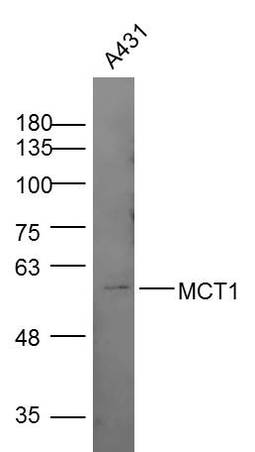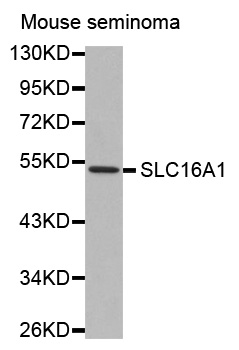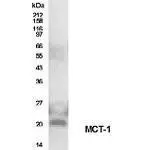MCT1 antibody [GT14612]
GTX631643
ApplicationsImmunoFluorescence, Western Blot, ImmunoCytoChemistry, ImmunoHistoChemistry, ImmunoHistoChemistry Paraffin
Product group Antibodies
TargetSLC16A1
Overview
- SupplierGeneTex
- Product NameMCT1 antibody [GT14612]
- Delivery Days Customer9
- Application Supplier NoteWB: 1:500-1:3000. ICC/IF: 1:100-1:1000. IHC-P: 1:100-1:1000. *Optimal dilutions/concentrations should be determined by the researcher.Not tested in other applications.
- ApplicationsImmunoFluorescence, Western Blot, ImmunoCytoChemistry, ImmunoHistoChemistry, ImmunoHistoChemistry Paraffin
- CertificationResearch Use Only
- ClonalityMonoclonal
- Clone IDGT14612
- Concentration1 mg/ml
- ConjugateUnconjugated
- Gene ID6566
- Target nameSLC16A1
- Target descriptionsolute carrier family 16 member 1
- Target synonymsHHF7, MCT, MCT1, MCT1D, monocarboxylate transporter 1, MCT 1, solute carrier family 16 (monocarboxylate transporter), member 1, solute carrier family 16 (monocarboxylic acid transporters), member 1, solute carrier family 16, member 1 (monocarboxylic acid transporter 1)
- HostMouse
- IsotypeIgG2b
- Protein IDP53985
- Protein NameMonocarboxylate transporter 1
- Scientific DescriptionThe SLC16A1 gene encodes a monocarboxylate transporter (MCT1) that mediates the movement of lactate and pyruvate across cell membranes Import and export of these substrates by tissues such as erythrocytes, muscle, intestine, and kidney are ascribed largely to the action of a proton-coupled MCT (Garcia et al., 1994 [PubMed 8124722]).[supplied by OMIM]
- Storage Instruction-20°C or -80°C,2°C to 8°C
- UNSPSC12352203
References
- Del Olmo T, Lauzier A, Normandin C, et al. APEX2-mediated RAB proximity labeling identifies a role for RAB21 in clathrin-independent cargo sorting. EMBO Rep. 2019,20(2). doi: 10.15252/embr.201847192Read this paper







